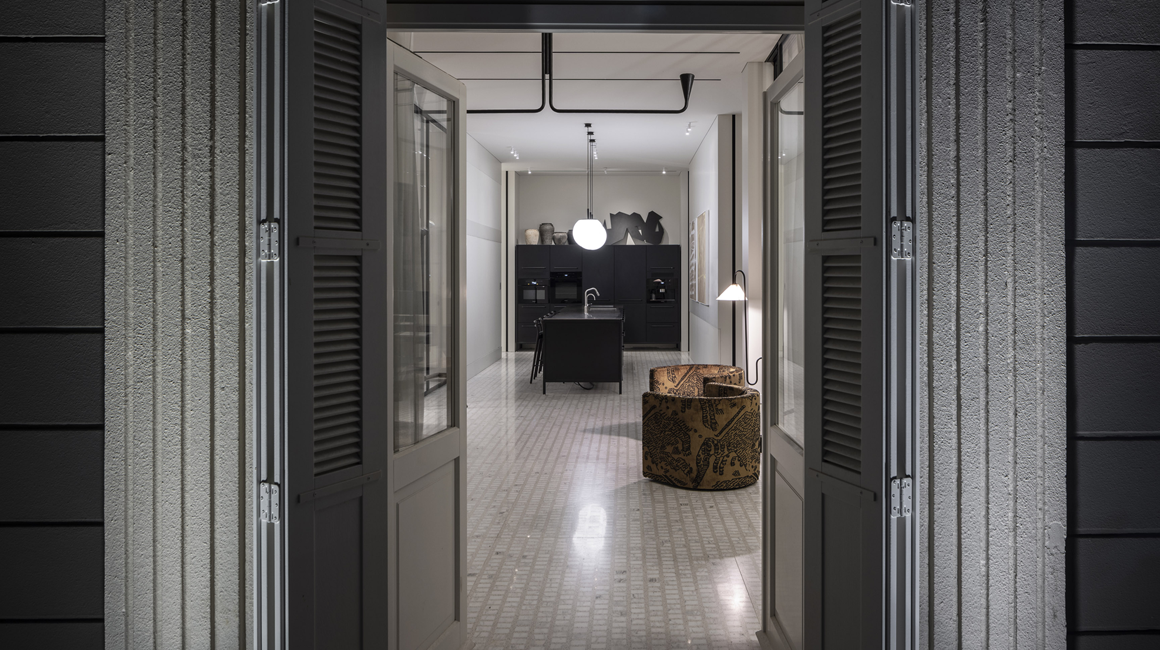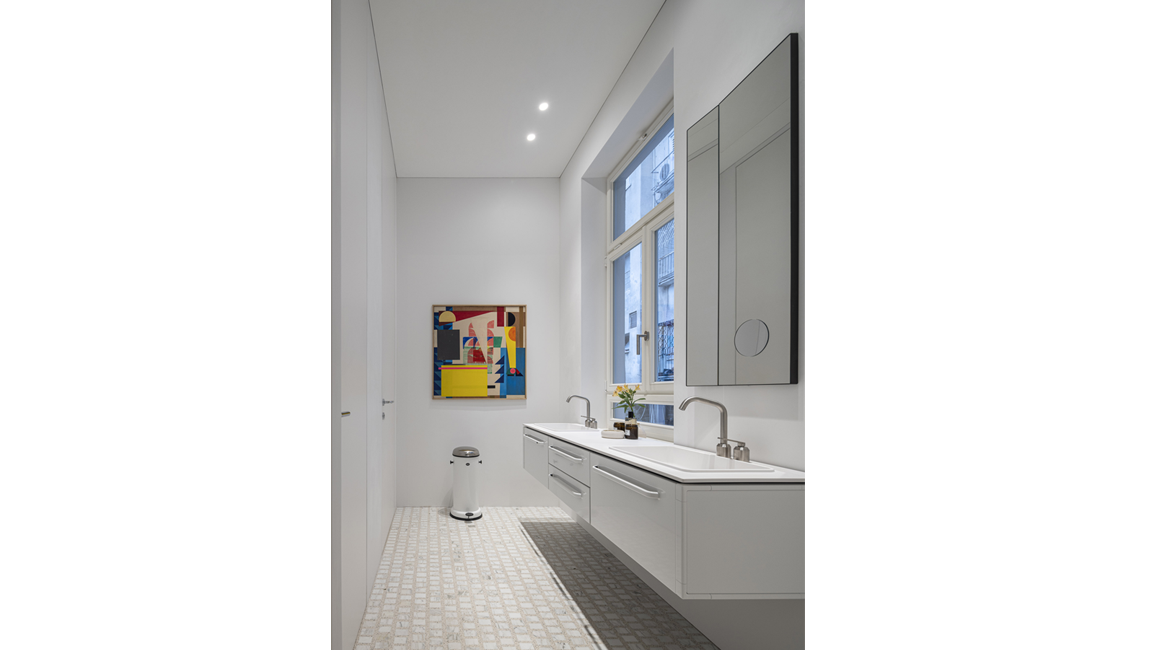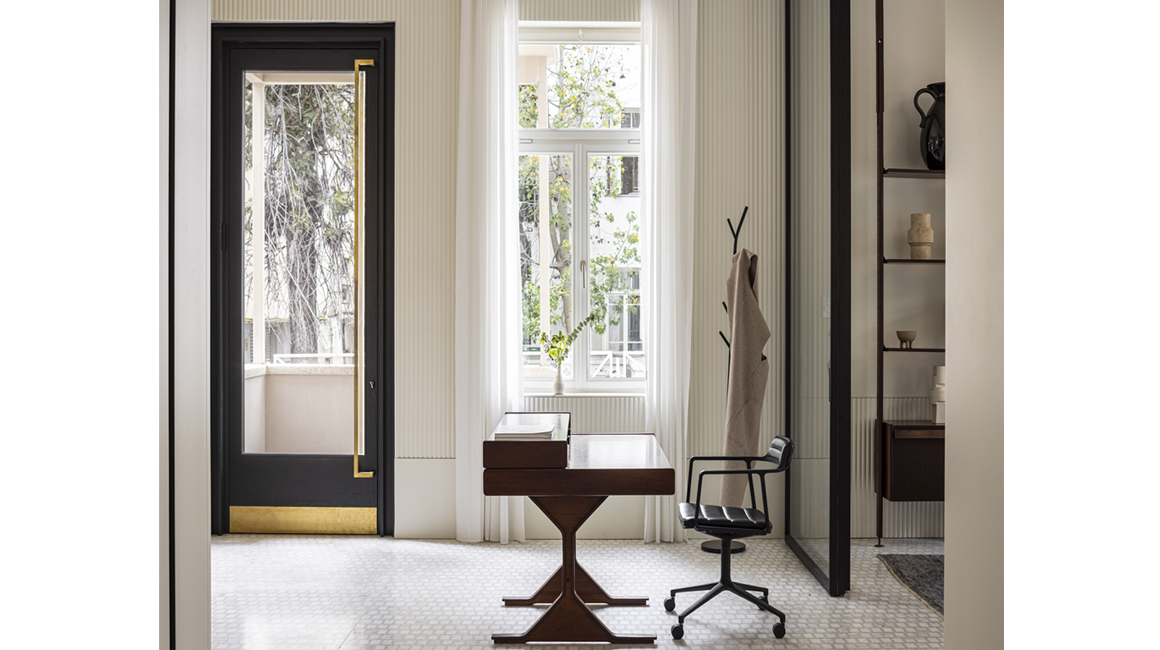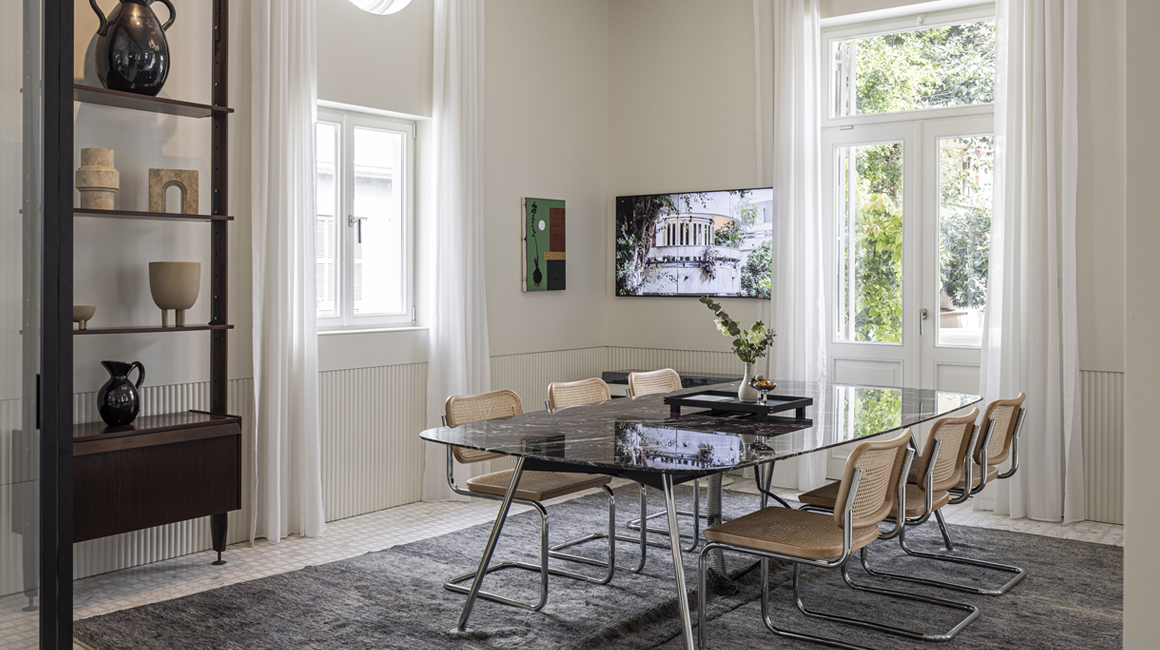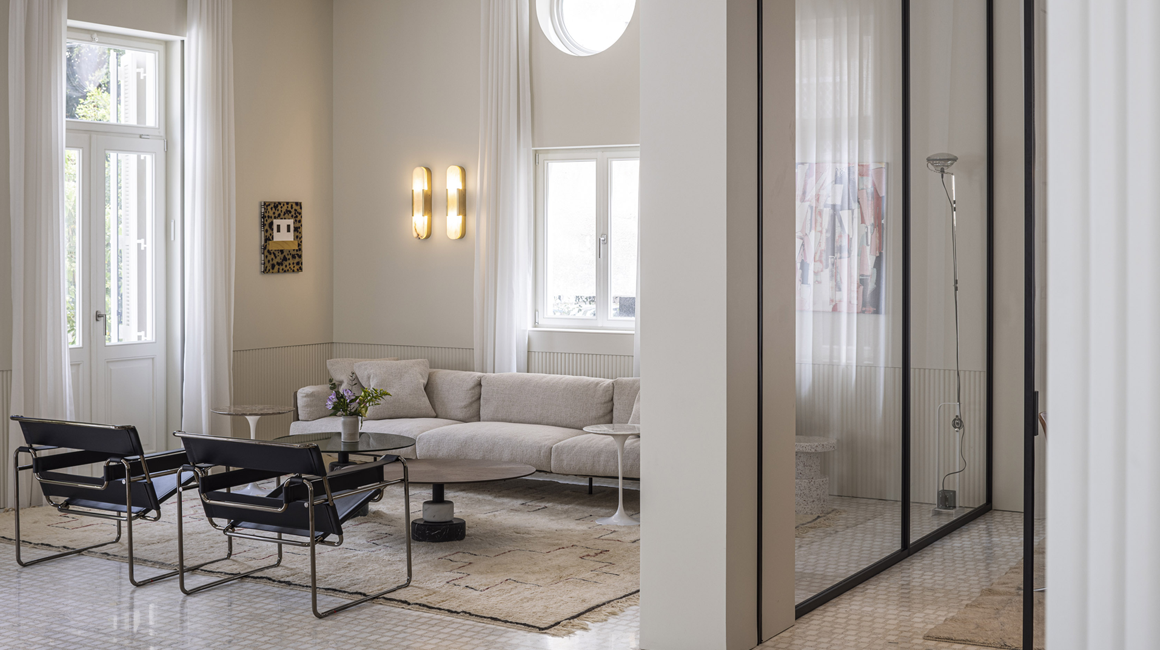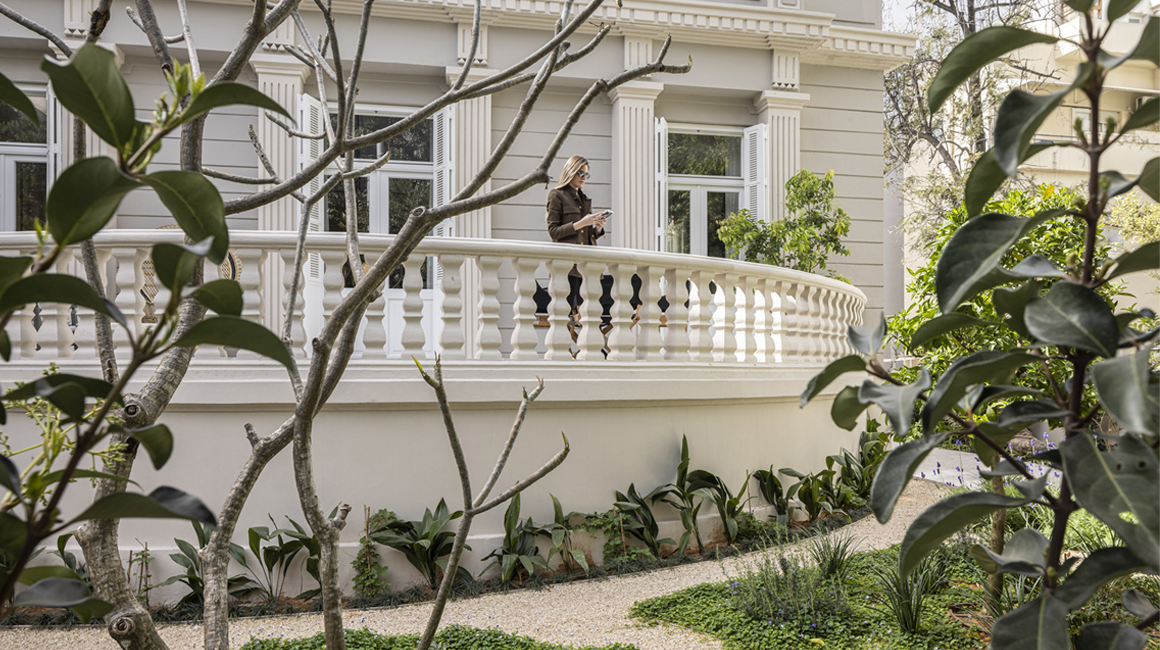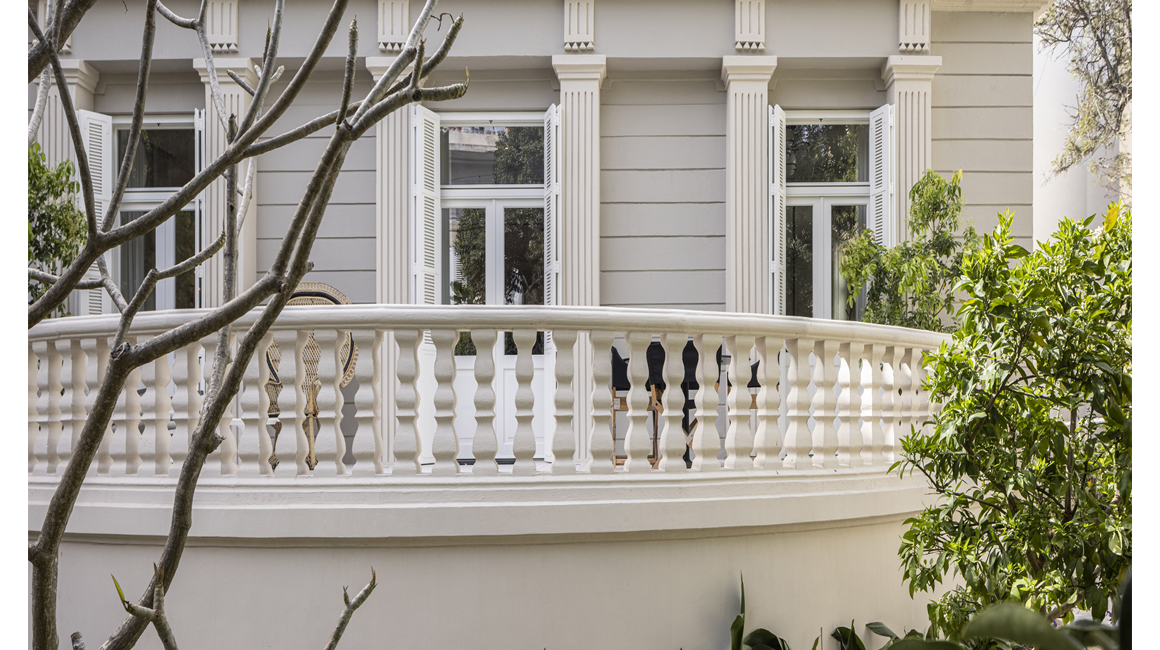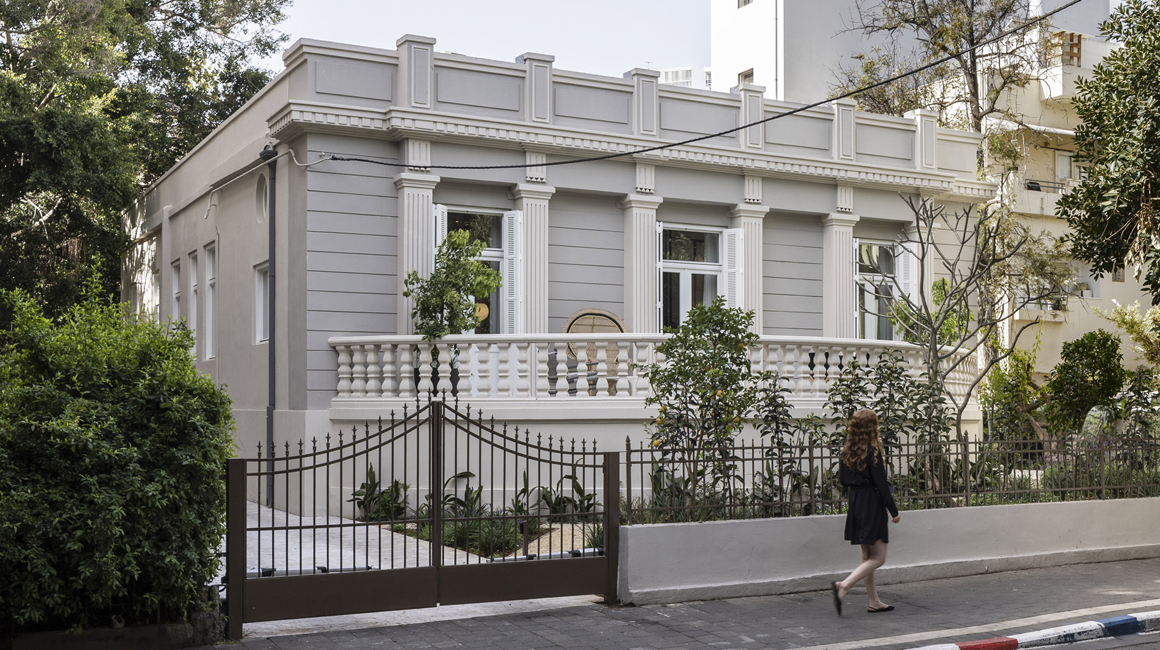46 Balfour
The architect Yehuda Zuckerman designed for the Stein family a spacious villa with a European appearance with a courtyard that surrounds it and creates an atmosphere of a suburban home in one of the Central European cities.
No wonder it was the choice of Haim Stein, born in the Austro-Hungarian Empire, who acquired his education in Vienna. Esther and Dr. Stein lived until 1925 on Nachalat Binyamin Street, in Beit Breutman. Although the walking distance from the new house on Balfour Street to the sanatorium where he worked is a little longer than he was used to from his previous house, Dr. Stein could still walk every morning and reach his workplace in less than 10 minutes.
Among Dr. Stein’s many medical activities, the establishment of the sanatorium ‘Ein Gedi’ is the one that left its mark on the history of the city. Many of the Tel Aviv children of the 1930s and 1940s were born in Dr. Stein’s maternity hospital.
In fact in 1939 Esther and Chaim, together with their only son Amram, 5 years old, moved to Rishon Lezion. The house on Balfour Street was rented over the decades but remained in the family’s possession.
In the 1950s, after Stein’s death, and after Esther’s death in 1988, at the age of 94, Amram inherited the villa and it was registered in his name. After the Stein family moved to their new residence in Rishon, it was the Sharpman family who lived in their place in the villa. Later, the place was rented to the Turkish Embassy in Israel, which managed its affairs from home until 1962. In June of that year, the offices of the Belgian Embassy moved here. It was a tumultuous period in Belgium’s shameful colonial history. At that time the Democratic Republic of the Congo won independence from its conquerors, but it was a peaceful process with corruption and a series of crimes against the local population, not without Belgium having a significant responsibility for the events. This led to riots and demonstrations around the world, as well as in Tel Aviv. The demonstrations took place in front of the embassy building cell.”
In the 1980s, the offices of the Manolilife-Menora insurance company were located here.
And now they are sitting in the office building of the White City buildings
Nega Nagarut was an important part of the project to restore the windows, doors and shutters in the building.
while maintaining the building’s high requirements for maximum insulation and reducing street noise.
Noga restored the wooden windows, wooden blinds and wooden doors in the building.
Original architect – Yehuda Zuckerman
Preservation Architecture: Bar Orian Architects
Supervision: Aviv Kifif
Entrepreneurship: the buildings of the White City
Photographer: Amit Gron


